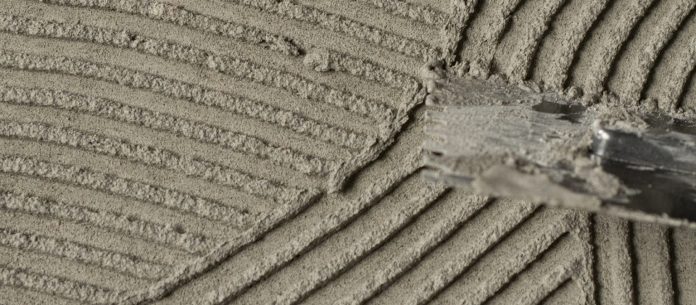Proficient tile layer Dmitry Drozdov (@instaburpro) has shared some helpful hints on how to choose the right Tile Adhesive. What would it be a good idea for you to focus on? For what reason would one say one is adhesive multiple times more costly than another? Does the value influence the nature of the item? Peruse our article to discover!
If it’s not too much trouble, note that we’ll discuss single-part, cement-based, adhesives, since they’re the most usually utilized for laying tiles. Above all else, you ought to decide for which explicit assignments you need a tile adhesive.
Underneath, a couple of things you need to set up before making a buy:
What sort of tile and size would you say you are working with?
What substrate would you say you are dealing with (plaster, drywall, and so on)?
Do you have a warmed floor?
These are generally vital components that will influence your decision of adhesive.
Watch out! Shockingly, you can’t generally believe the data you find on the bundling. If the adhesive says “for tiles of any arrangement” or “for a substrate”, you should think about that while taking other factors: it may very well be a promoting trick. The main thing you can, and ought to, depend on is the adhesive class.
A Cement Wall Plastering Machine can reduce the plastering time.
Classification Of Glue For Tiles
As per GOST 56387, ISO 13007/AS4992 CE, and UNI EN 12004, there are three principal classes:
Straightforward adhesive (class C0);
Typical adhesive (class C1);
Worked on the adhesive (class C2).
Each class meets explicit necessities, yet it ought to be noticed that, inquisitively, C0 is simply viewed as an adhesive (and named such) in Russia, where it is sold by GOST norms.
Class C0 is an adhesive for tiles with ordinary water ingestion (5% of the tile weight or more). It is just reasonable for little or medium-sized earthenware production (not for porcelain stoneware definitely), to be introduced in a warmed indoor climate (no outside) yet with no underfloor warming framework, on a strong mineral substrate (cement plaster). The attachment to the substrate, otherwise called the strength of the adhesive security, for basic adhesive, should be 0.5 MPa (0.5 N/mm2).
For instance, you may utilize class C0 adhesive for a kitchen backsplash where tile design is close to 30x30cm or 25x35cm. Just light artistic tiles on cement plaster! This class isn’t reasonable for working with porcelain stoneware, outside climate, a warmed floor, tiles bigger than 30x30cm, or tiles introduced on drywall or hydro protection materials.
Class C1 can be utilized on both fired tiles and porcelain stoneware. It is reasonable for establishments on underfloor warming frameworks, open-air, in spaces of high mugginess, on drywall or hydro protection materials. However, there are a few limitations in regards to the size of tiles: you shouldn’t utilize it for anything bigger than 40x40cm on a non-deformable indoor substrate, and anything bigger than 30×30 on a warmed floor framework, on drywall, or hydro protection materials. Open-air work is just conceivable with little configuration tiles in a cellar or on a structure exterior. Such adhesives are not appropriate for enlivening doors. Their bond strength should be 0.5 mPa (0.5N/mm2).
Class C2 is a worked-on adhesive for a wide range of tiles and practically any kind of substrate, including old tiles. Grip strength is somewhere around 1 mPa (1 N/mm2). Tiles organization can be up to 60x60cm for standard C2.
C2 class adhesives are likewise named S1 or S2, which alludes to adaptability:
S1 – Adaptable adhesive;
S2 – Profoundly adaptable adhesive.
An adhesive with more prominent adaptability is appropriate, for instance, for laying tiles on deformable substrates (uncured tirades, wooden floors) or when working with designs bigger than 60x60cm.
C2 S1 class adhesives can be utilized when working indoors with tiles estimated 20x80cm, 30x90cm, 60x120cm, and 20x120cm, including warmed floors. When laying tiles open air it is as yet a reasonable adhesive insofar as you’re working with 60x60cm tiles or more modest. You could likewise utilize it for huge organization porcelain tiles, for example, 100x300cm or 120x240cm however just if introducing on solid, great quality plaster.
C2 S2 class adhesive is utilized for a surface with tiles bigger than 120cm on the two sides. It works extraordinarily when you need to lay tiles of any arrangement on warmed underfloors, plasterboard structures, outside porches, or galleries.
Classes C1 or C2 can likewise be also marked with the letters T, E, and F. We should take a gander at what this implies!
T represents Thixotropy. A more gooey adhesive with decreased vertical slip is utilized for laying tiles through and through or any place tiles are laid on a thicker than a customary layer of adhesive.
E represents adhesive with Broadened open time (30 minutes or more). This is the time during which the tiles can be laid. It is advantageous to work with such adhesives throughout the late spring since its surface evaporates and sets gradually.
F represents Quick setting adhesive, utilized at lower temperatures or when you need to get a speedy arrangement of adhesive strength.
So we should recap!
Most importantly, you should search for the data you need on the bundling as per where you are (for instance, “relates to GOST 56387”). Assuming there is nothing of the sort, there is no reason for perusing further because all that is composed on the bundle just doesn’t make any difference.
Then, search for the grouping of the adhesive – (C0, C1, or C2) since this stamping shows its motivation and the assignments for which it is reasonable.










